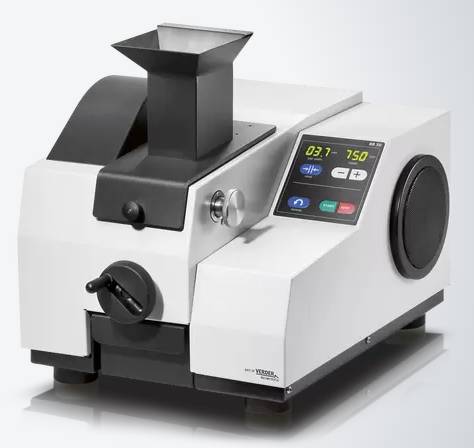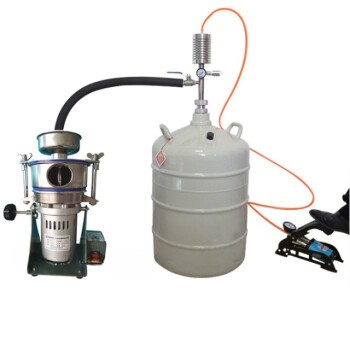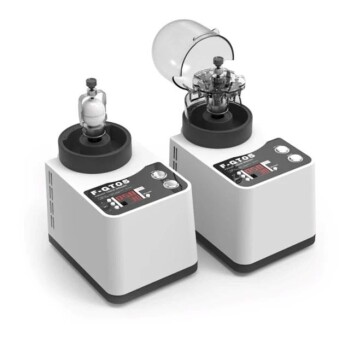Introduction to Crushing Equipment

Crushing equipment plays a crucial role in sample preparation for scientific analysis. It is through effective crushing techniques that accurate and consistent results can be obtained, facilitating easier handling and processing of materials. Furthermore, maintaining sample integrity and quality is of utmost importance, as it ensures that the results are representative of the original material. In this comprehensive guide, we will explore the three stages of crushing: primary, secondary, and tertiary. By understanding the functions and examples of each stage, as well as the different types of crushers used, you will gain valuable insights into the reduction of bulky materials into smaller particles for various applications.
Primary Crushers: Breaking Down Large Materials
Primary crushers play a crucial role in the initial stages of material size reduction in various industries, including mining, quarrying, and laboratory research. They are responsible for breaking down large materials into smaller, more manageable sizes. This section will discuss the definition, characteristics, and selection factors of primary crushers, focusing on jaw crushers, gyratory crushers, and impact crushers.

Definition and Characteristics of Primary Crushers
Primary crushers are machines designed to break down large materials into smaller pieces. They are typically the first stage of the crushing process and are capable of handling relatively large sample sizes. These crushers are used in various industries to reduce the size of different types of materials such as rocks, minerals, and ores.
Characteristics of primary crushers include:
-
Crushing Mechanism: Primary crushers employ different mechanisms to achieve size reduction. They utilize the mechanical force of compression, impact, or a combination of both.
-
Feed Size: Primary crushers can handle larger feed sizes compared to secondary and tertiary crushers. They are designed to accept materials with a maximum feed size of up to 125mm to 1200mm, depending on the specific model.
-
Crushing Capacity: Primary crushers have a high crushing capacity, allowing them to process large quantities of material efficiently.### Jaw Crushers: Working Principle and Applications
Jaw crushers are one of the most commonly used types of primary crushers. They operate by compressing the material between two opposing jaws, one fixed and the other movable. The movable jaw exerts force on the material, crushing it against the fixed jaw.
The working principle of jaw crushers involves a series of steps:
-
Feed material is introduced into the crushing chamber and is crushed between the jaws.
-
The crushed material then exits through the discharge opening at the bottom of the crusher.
Jaw crushers are versatile machines that find applications in various industries, including mining, construction, and laboratory research. They are suitable for crushing a wide range of materials, including hard and abrasive ones. Jaw crushers are ideal for primary crushing due to their high capacity and ability to produce a well-graded product.
Selection Factors for Primary Crushers
When selecting a primary crusher, several factors need to be considered to ensure optimal performance and efficiency. These factors include:
-
Material Characteristics: The type, hardness, and abrasiveness of the material being crushed play a significant role in determining the appropriate primary crusher. Different crushers are designed to handle specific materials effectively.
-
Feed Size: The maximum feed size of the material is an essential factor to consider. It should be compatible with the feed opening of the crusher to ensure efficient crushing.
-
Capacity Requirements: The required capacity of the primary crusher depends on the production needs and the size reduction goals. It is crucial to select a crusher with sufficient capacity to meet the desired output.
-
Maintenance and Operating Costs: Consideration should be given to the maintenance requirements and operating costs associated with the primary crusher. This includes factors such as wear parts replacement, energy consumption, and ease of maintenance.
-
Accessibility and Safety: The design of the primary crusher should allow for easy accessibility for maintenance and repairs. Safety features, such as proper guarding, should also be considered to ensure a safe working environment.
Secondary Crushers: Refining Particle Size

Secondary crushers play a vital role in the process of reducing the size of various materials. They follow primary crushers and are designed to further refine the particle size, resulting in a finer output. This section will discuss the definition and characteristics of secondary crushers, including cone crushers, roll crushers, and impact crushers. Additionally, it will explore the applications and selection factors to consider when choosing a secondary crusher.
Definition and Characteristics of Secondary Crushers
Secondary crushers are machines that are used to reduce the size of materials after they have been initially crushed by primary crushers. They are specifically designed to handle medium-sized materials and produce a finer output compared to primary crushers. This refining process is crucial in achieving the desired particle size for various applications, such as in mining, quarrying, and aggregate production.
Secondary crushers are commonly classified into three main types: cone crushers, roll crushers, and impact crushers. Each type has its own unique characteristics and working principles.
Impact Crushers: Working Principle and Applications
Impact crushers, also known as hammer crushers, rely on impact rather than compression to crush the material. They utilize a high-speed rotor that impacts the material, causing it to break into smaller pieces. Impact crushers are versatile machines that can handle both hard and soft materials.
These crushers are widely used in industries such as mining, quarrying, and recycling. They are particularly effective for processing materials with high abrasiveness and for producing a well-graded product. Impact crushers are often used in aggregate production, cement production, and other applications where a higher reduction ratio is desired.
Selection Factors for Secondary Crushers
When selecting a secondary crusher, several factors need to be considered:
-
Application requirements: Consider the specific application and the desired output size. Different crushers excel in different applications, so choosing the right one is essential.
-
Material characteristics: Assess the properties of the material to be crushed, such as hardness, abrasiveness, and moisture content. Different crushers are better suited to handle certain materials, so understanding the material characteristics is crucial.
-
Capacity requirements: Determine the required capacity or throughput of the crusher. This will depend on the production demands and the desired particle size distribution.
-
Operational considerations: Evaluate factors such as maintenance requirements, energy efficiency, and ease of operation. These aspects can impact the overall performance and cost-effectiveness of the crusher.
-
Budget: Consider the budgetary constraints when selecting a secondary crusher. It is important to find a balance between performance and cost.
By carefully considering these selection factors, researchers, engineers, and operators can choose the most suitable secondary crusher for their specific needs.
Tertiary Crushers: Fine-tuning the Crushing Process

Tertiary crushers play a crucial role in the crushing process by further reducing the size of the materials. They are commonly used in the final stages of crushing for aggregate production and mineral processing. Tertiary crushers are designed to produce a well-graded product with a narrow size distribution. In this section, we will discuss the definition, characteristics, working principles, and selection factors for tertiary crushers, along with some use cases.
Definition and Characteristics of Tertiary Crushers
Tertiary crushers are a type of crushing equipment that is used to produce a well-graded product with a narrow size distribution. They are designed to further reduce the size of the material after primary and secondary crushers have already performed their initial crushing stages. Tertiary crushers excel at producing a fine and well-graded product, which is essential for various applications.
One of the key characteristics of tertiary crushers is their ability to control the size and shape of the output material. They can produce a variety of final products by adjusting the crusher settings and utilizing different crushing chambers. This flexibility allows for precise fine-tuning of the crushing process to meet specific requirements.
Vertical Shaft Impact (VSI) Crushers: Working Principle and Applications
Vertical Shaft Impact (VSI) crushers, also known as impact crushers or sand making machines, are commonly used as tertiary crushers in the mining and construction industries. They operate on the principle of throwing the material against a hard surface to produce high-quality cubical-shaped particles.
The working principle of VSI crushers involves a high-speed rotor with wear-resistant tips that throw the material against an anvil or autogenous rock lining in the crushing chamber. This impact causes the material to break and cleave along its natural fracture lines, resulting in the production of well-shaped and fine aggregates.
VSI crushers are widely used in the production of manufactured sand, shaping of aggregates, and recycling applications. They offer excellent particle shape control, low operating costs, and high production capacity.
Cone Crushers: Working Principle and Applications
Cone crushers are another type of tertiary crushers commonly used in the mining and aggregate industries. They operate by compressing the material between a mantle and a concave surface, resulting in the reduction of the material size.
The working principle of cone crushers involves the rotational motion of the mantle against the concave surface. As the material enters the crushing chamber, it is compressed and crushed between the mantle and concave liners. The crushed material then exits through the discharge opening at the bottom of the crusher.
Cone crushers are known for their high performance and efficiency in producing well-graded materials. They are suitable for secondary and tertiary crushing stages and can handle a wide range of materials, including hard and abrasive ones.
Selection Factors for Tertiary Crushers
When selecting a tertiary crusher, several factors should be taken into consideration to ensure optimal performance and productivity:
-
Crushing Requirements: Consider the required size reduction ratio, the desired final product shape, and the specific material properties.
-
Throughput Capacity: Evaluate the maximum feed size and the desired production rate to determine the appropriate crusher size and type.
-
Operating Costs: Assess the energy consumption and maintenance requirements associated with the crusher to optimize the cost of operation.
-
Wear Parts: Examine the availability and cost of wear parts, as well as the ease of replacement, to minimize downtime and maintain productivity.
-
Space Constraints: Consider the physical space available for the crusher installation and ensure it aligns with the equipment's dimensions.
Use Cases for Tertiary Crushers
Tertiary crushers find applications in various industries, including:
-
Aggregate Production: Tertiary crushers are used to produce well-graded aggregates for construction purposes, such as concrete and asphalt production.
-
Mineral Processing: Tertiary crushers are utilized in mineral processing plants to finely crush ore and separate valuable minerals from gangue minerals.
-
Recycling: Tertiary crushers are employed in recycling facilities to reduce the size of recycled materials, such as concrete and demolition debris, for further processing or reuse.
-
Manufactured Sand Production: Tertiary crushers, especially VSI crushers, are widely used in the production of manufactured sand, providing high-quality aggregates for use in construction projects.

Related Products
- Small Cryogenic Grinder Cryomill Cryogrinder with Liquid Nitrogen for Laboratory Use
- Laboratory Hybrid Tissue Grinding Mill
- Laboratory Grinding Mill Mortar Grinder for Sample Preparation
- Disc Cup Vibrating Mill Multi-Platform for Lab
- Laboratory High Throughput Tissue Grinding Mill Grinder
Related Articles
- Preserving the Irreplaceable: How ULT Freezers Protect Critical Samples Across Industries
- Laboratory Sample Preparation and Digestion Equipment
- Exploring the World of Molecular Gastronomy
- Development and Principles of Frozen Tissue Crushers
- How ULT Freezers Protect Scientific Discoveries in Genetics and Drug Development














